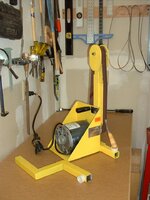Hi Stanley:
For what it is worth, your experience was similar to mine. Ten days and ten pens later, I reach for the Thompson skew and/or D-way skew first. In fact, I no longer use my Sorbey spindlemaster or Sorbey oval skew. It is not that the Sorbey's or others are not very good, it was just a matter of experience (getting used to the skews), and slightly changing the bevel angle to 30 or 35 degrees. In fact, D-way arrive at 35, but the Thompson arrived at 30 or 25, and I have since changed the bevel angle and love the results - smoother finishing (less sanding), so far no tear outs, and many of the other benefits. I am likely to change the Thompson to 40 degrees, but I am having success with 35 - just want to experiment.
I am NOT trying to persuade you or anyone to use anything but what makes the hobby fun for them and produce the results that they want. My first 300 of 450 pens were made with carbide and I swore that I would never use a skew.
I only wanted to share with you my personal learning curve and even frustration and disappointment. However, several hours of practice, about 3 dozen phone calls and emails to the seller, and IAP member later, I do prefer the skews. I am going to give the Carters brand a try next - just because I like to try different tools, not because I am unhappy with the D-way or Thompson. I also watch several excellent (and free) videos many times. There are two or three that I continue to watch.
Bottom line: Use what makes you happy and produces the desires results for your manner and style of turning. I was not getting what I wanted from carbide, nor Sorbey, so I tried others. It's a very "personal" issue.
BTW, thank you for serving our country.

